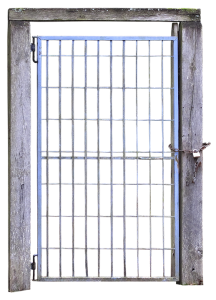The Artistic Genius of Shigeo Fukuda: A Master of Illusion
Shigeo Fukuda is a name that is synonymous with innovation, creativity, and artistry. He was a Japanese artist and designer whose works continue to surprise and captivate viewers around the world. Fukuda was a master of optical illusion and possessed a unique ability to manipulate space and form. In this article, we will delve into the life and works of Shigeo Fukuda, exploring his journey as an artist and his contributions to the world of art.
Early Life and Education
Shigeo Fukuda was born in Tokyo, Japan, in 1932. He grew up in a family that fostered creativity and artistic expression, which played a significant role in shaping his artistry. At the age of 20, Fukuda attended the Tokyo National University of Fine Arts and Music, where he studied graphic design.
Career Highlights
After graduating from the Tokyo National University of Fine Arts and Music, Fukuda embarked on his career as an artist and designer. One of his earliest notable works was the creation of a poster promoting the 1964 Tokyo Olympics, which received international recognition for its distinct style and use of color.
Fukuda’s oeuvre includes a vast array of works, ranging from posters, sculptures, and installations, each bearing the distinct signature of his style. His works are characterized by a playful and irreverent use of space, combining form with function to create vivid and memorable impressions on the viewer’s mind.
One of his most famous works includes the poster design for the Tokyo Metropolitan Festival in 1972, which features a giant pencil, a violin, and a paintbrush assembled into the shape of a tower. The poster is a stunning example of Fukuda’s mastery over the use of negative space, creating an illusion of depth and dimensionality.
Fukuda’s talent for optical illusions is evident in his work “Face/Vase,” which features the interplay between a human face and a vase, depending on the viewer’s perspective. Another notable work is the “Lion” sculpture, which appears to be a cluster of random shapes until viewed from a certain angle, revealing the form of a majestic lion.
Fukuda continued to create groundbreaking works until his death in 2009, leaving behind a rich legacy of artistic achievement and inspiration.
Conclusion
Shigeo Fukuda’s contribution to the world of art is unparalleled, and his works continue to inspire new generations of artists and designers around the world. His unique style and mastery of optical illusions have made him a constant source of amazement and wonder for viewers of all ages.
FAQs
Q: What is Shigeo Fukuda’s signature style?
A: Shigeo Fukuda’s works are characterized by a playful and irreverent use of space, combining form with function to create vivid and memorable impressions on the viewer’s mind.
Q: What is Fukuda’s most famous work?
A: Fukuda’s most famous work is the poster design for the Tokyo Metropolitan Festival in 1972, which features a giant pencil, a violin, and a paintbrush assembled into the shape of a tower.
Q: What is the “Face/Vase” artwork?
A: The “Face/Vase” artwork is an example of Fukuda’s talent for optical illusions, featuring the interplay between a human face and a vase, depending on the viewer’s perspective.
Q: What is the “Lion” sculpture?
A: The “Lion” sculpture is another example of Fukuda’s talent for optical illusions, appearing to be a cluster of random shapes until viewed from a certain angle, revealing the form of a majestic lion.
Q: What is Shigeo Fukuda’s legacy?
A: Shigeo Fukuda’s contribution to the world of art is unparalleled, leaving behind a rich legacy of artistic achievement and inspiration.






